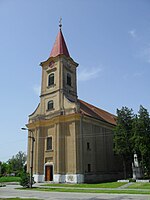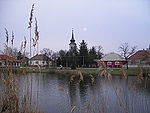Battle of Hetény
The Battle of Hetény, fought on 5 September 1849, between Hungarian Hussars led by General György Klapka and a Russian detachment of Cossacks was one of the last battles of the Hungarian War of Independence. After the surrender of the Hungarian army led by General Artúr Görgei at Szőlős, one of the last strongholds of the Hungarian independence was the fortress of Komárom, which now was being surrounded by Austrian and Russian troops. The small reconnaissance unit of Hungarian hussars which tried to acquire knowledge about the enemy's strength, was attacked by a platoon of Russian cossacks, but the Hungarians defeated them, using the tactic of feigned retreat. These kind of small scaled battles and skirmishes between Hungarian troops with the Austrian and Russian besieging units continued until the surrender of the fortress of Komárom on 2 October 1849.
Excerpt from the Wikipedia article Battle of Hetény (License: CC BY-SA 3.0, Authors).Battle of Hetény
589,
Geographical coordinates (GPS) Address Nearby Places Show on map
Geographical coordinates (GPS)
| Latitude | Longitude |
|---|---|
| N 47.814083333333 ° | E 18.218861111111 ° |
Address
589
946 31 (Chotín)
Region of Nitra, Slovakia
Open on Google Maps





